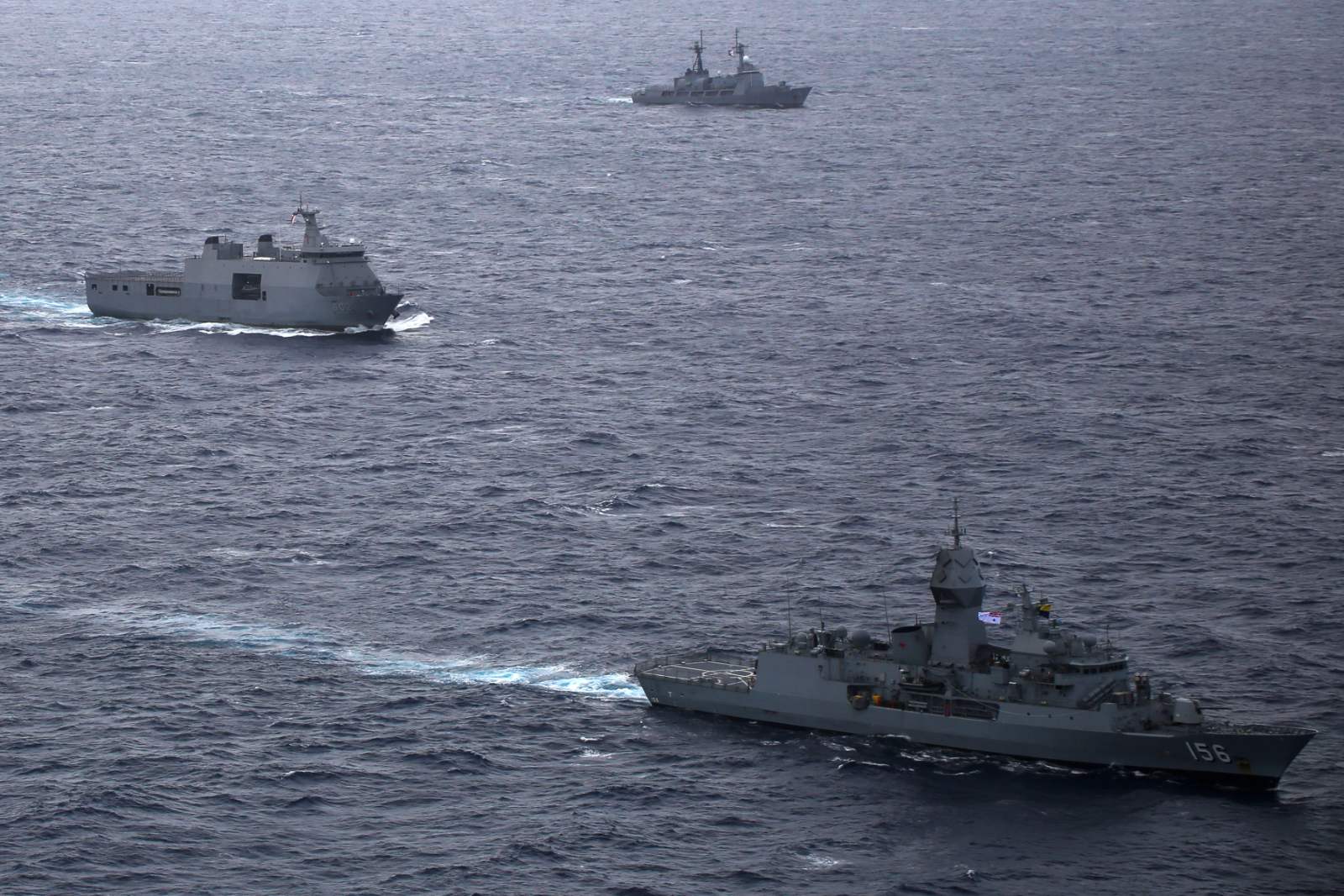
The Armed Forces of the Philippines (AFP) has stopped the weekly publication of the number of Chinese vessels being monitored in the West Philippine Sea (WPS) as part of a recalibrated approach in its information strategy on the WPS issue, a ranking military officer said on Tuesday, Oct. 22.
Instead of publishing the number of Chinese vessels operating in the Philippines’ exclusive economic zone (EEZ), the AFP decided to give updates on the activities being done by the Philippine Navy (PN) and Philippine Air Force (PAF) to protect the country’s territorial integrity in the disputed waters, said Rear Adm. Roy Vincent Trinidad, PN spokesperson for WPS.
From October 1 to 18, it was bared that the PN and (PAF) conducted 64 successful patrol missions to reinforce the security and sovereignty of the country’s waters. These operations include sealift missions, maritime patrols, a medical evacuation, and rotation and resupply (RORE) missions.
“The Philippine Navy and the Armed Forces are recalibrating our approach when it comes to public affairs on the West Philippine Sea. Our emphasis is more on the activities conducted by the AFP,” Trinidad said.
He said the adjustment was made after Department of National Defense (DND) Sec. Gilberto Teodoro Jr. announced the institution of a new defense concept called the Comprehensive Archipelagic Defense Concept (CADC).
The CADC seeks to develop the country’s capability to protect and secure the entire Philippine territory and exclusive economic zone (EEZ), and ensure that all the bounties of the natural resources within them will be freely reaped by the Filipinos.
“The overall picture is that after the pronouncement by the Secretary of National Defense (SND) that we will be instituting a Comprehensive Archipelagic Defense Concept, the AFP recalibrated its approach in the West Philippine Sea,” Trinidad explained.
“I would say majority, if not all, of the strategic assets of the Philippine Navy and the Philippine Air Force are now geared towards protecting, securing, and monitoring all the way up to our exclusive economic zone, that includes the West Philippine Sea. So yes, there has been a dramatic increase in our activities in the West Philippine Sea after the pronouncement of the SND,” he explained.
In February this year, the Navy began publishing a weekly report on the number of Chinese vessels being monitored in the WPS when Trinidad was assigned to be the PN spokesperson for WPS issues.
The data covers the number of People’s Liberation Army (PLA)-Navy warships, China Coast Guard (CCG) ships, Chinese maritime militia vessels (CMMVs), and Chinese research and survey vessels (CRSVs) in 13 features within the Philippines’ 200-nautical mile EEZ namely Bajo de Masinloc, Ayungin Shoal, Pag-asa Island, Parola Island, Kota Island, Likas Island, Lawak Island, Panata Island, Patag Island, Rizal Reef, Sabina Shoal, Julian Felipe Reef, and Iroquois Reef.
This was seen as part of the so-called transparency initiative of the government to expose the “illegal presence” of Chinese vessels in the Philippines’ EEZ.
However, on October 8, the PN limited the publication of its coverage to only three features: Ayungin Shoal where BRP Sierra Madre is being maintained by the Navy, Sabina Shoal which had been previously guarded by Philippine Coast Guard (PCG) ship BRP Teresa Magbanua, and Bajo de Masinloc which has been filled with tension every now and then due to confrontations between Filipino fishermen and CCG ships.
Monthly reporting
Meanwhile, Trinidad said that the PN still monitors the presence of Chinese vessels in the WPS. But he stated that the publication of the PN’s report about it will be made monthly instead of weekly “to give us a better assessment tool.”
“We will still be reporting that but we are looking at having a longer period of coverage. Dati-rati (Before) it was weekly, we're trying to look at doing it on a monthly basis this time,” Trinidad said.
“Mahirap kasi mag-assess kung daily or weekly (It’s harder to assess if it’s daily or weekly). We could look at trends if we expand the period of coverage,” he explained. “This time, we are looking at a better metrics, better assessment of tool to be able to look at trends of the illegal presence of the PLA Navy, the Coast Guard, and the maritime militia.”